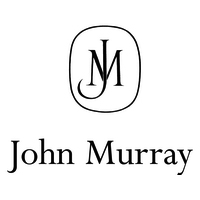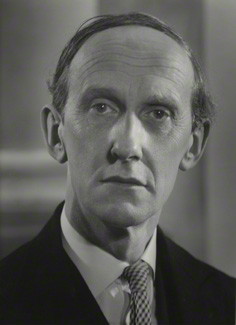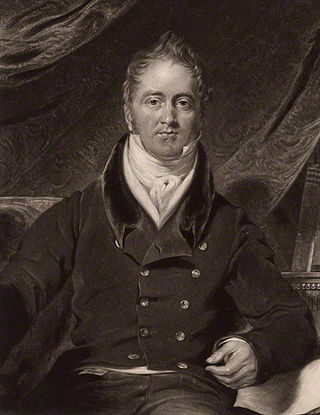Related Research Articles

Jane Austen was an English novelist known primarily for her six novels, which implicitly interpret, critique, and comment upon the British landed gentry at the end of the 18th century. Austen's plots often explore the dependence of women on marriage for the pursuit of favourable social standing and economic security. Her works are an implicit critique of the novels of sensibility of the second half of the 18th century and are part of the transition to 19th-century literary realism. Her deft use of social commentary, realism and biting irony have earned her acclaim among critics and scholars.

Edward John Moreton Drax Plunkett, 18th Baron of Dunsany,, commonly known as Lord Dunsany, was an Anglo-Irish writer and dramatist. He published more than 90 books during his lifetime, and his output consisted of hundreds of short stories, plays, novels, and essays. He gained a name in the 1910s as a great writer in the English-speaking world. Best known today are the 1924 fantasy novel The King of Elfland's Daughter, and his first book, The Gods of Pegāna, which depicts a fictional pantheon. Many critics feel his early work laid grounds for the fantasy genre.

The English novel is an important part of English literature. This article mainly concerns novels, written in English, by novelists who were born or have spent a significant part of their lives in England, Scotland, Wales, or Northern Ireland. However, given the nature of the subject, this guideline has been applied with common sense, and reference is made to novels in other languages or novelists who are not primarily British, where appropriate.

Susanna Blamire was an English Romantic poet, sometimes known as 'The Muse of Cumberland' because many of her poems represent rural life in the county and, therefore, provide a valuable contradistinction to those amongst the poems of William Wordsworth that regard the same subject, in addition to those of the other Lake Poets, especially those of Samuel Taylor Coleridge, and in addition to those of Lord Byron, on whose The Prisoner of Chillon her works may have had an influence. Blamire composed much of her poetry outside, sat beside a stream in her garden at Thackwood. She also played the guitar and the flageolet, both of which she used in the process of the composition of her poetry.

John Murray is a Scottish publisher, known for the authors it has published in its long history including Jane Austen, Arthur Conan Doyle, Lord Byron, Charles Lyell, Johann Wolfgang von Goethe, Herman Melville, Edward Whymper, Thomas Robert Malthus, David Ricardo, and Charles Darwin. Since 2004, it has been owned by conglomerate Lagardère under the Hachette UK brand.

Lord Edward Christian David Gascoyne-Cecil, CH was a British biographer, historian, and scholar. He held the style of "Lord" by courtesy as a younger son of a marquess.

John Murray was a Scottish publisher and member of the John Murray publishing house. He published works by authors such as Sir Walter Scott, Lord Byron, Jane Austen and Maria Rundell.
Robert Nye FRSL was an English poet and author. His bestselling novel Falstaff, published in 1976, was described by Michael Ratcliffe as "one of the most ambitious and seductive novels of the decade", and went on to win both The Hawthornden Prize and Guardian Fiction Prize. The novel was also included in Anthony Burgess's 99 Novels: The Best in English Since 1939 (1984).
— words chiselled onto the tombstone of John Keats, at his request
Nationality words link to articles with information on the nation's poetry or literature.
Nationality words link to articles with information on the nation's poetry or literature.

Tamerlane and Other Poems is the first published work by American writer Edgar Allan Poe. The short collection of poems was first published in 1827. Today, it is believed only 12 copies of the collection still exist.

George Gordon Byron, 6th Baron Byron, was an English poet and peer. He is one of the major figures of the Romantic movement, and is regarded as being among the greatest of English poets. Among his best-known works are the lengthy narratives Don Juan and Childe Harold's Pilgrimage; much of his shorter lyrics in Hebrew Melodies also became popular.
The History of England is a 1791 work by Jane Austen, written when the author was fifteen.

Juvenilia; or, a Collection of Poems Written between the ages of Twelve and Sixteen by J. H. L. Hunt, Late of the Grammar School of Christ's Hospital, commonly known as Juvenilia, was a collection of poems written by James Henry Leigh Hunt at a young age and published in March 1801. As an unknown author, Hunt's work was not accepted by any professional publishers, and his father Isaac Hunt instead entered into an agreement with the printer James Whiting to have the collection printed privately. The collection had over 800 subscribers, including important academics, politicians and lawyers, and even people from the United States. The critical and public response to Hunt's work was positive; by 1803 the collection had run into four volumes. The Monthly Mirror declared the collection to show "proofs of poetic genius, and literary ability", and Edmund Blunden held that the collection acted as a predictor of Hunt's later success. Hunt himself came to despise the collection as "a heap of imitations, all but absolutely worthless", but critics have argued that without this early success to bolster his confidence Hunt's later career could have been far less successful.
Jane Taylor was an English poet and novelist best known for the lyrics of the widely known "Twinkle, Twinkle, Little Star". The sisters Jane and Ann Taylor and their authorship of various works have often been confused, partly because their early ones were published together. Ann Taylor's son, Josiah Gilbert, wrote in her biography, "Two little poems – 'My Mother,' and 'Twinkle, twinkle, little Star' – are perhaps more frequently quoted than any; the first, a lyric of life, was by Ann, the second, of nature, by Jane; and they illustrate this difference between the sisters."
Juvenilia Press is an international non-profit research and pedagogic press based in the School of Arts and Media at the University of New South Wales. The press undertakes to provide undergraduate and post-graduate students with hands-on experience of textual transmission under the guidance of an academic supervisor. The scholarly volumes published by the press are works from the genre of literary juvenilia—the early works of known writers—and are printed in a format that includes a preface, introduction, note on the text, end notes, textual and contextual appendices, and illustrations.

Romanticism was an artistic, literary, and intellectual movement that originated in Europe toward the end of the 18th century. Scholars regard the publishing of William Wordsworth's and Samuel Coleridge's Lyrical Ballads in 1798 as probably the beginning of the movement in England, and the crowning of Queen Victoria in 1837 as its end. Romanticism arrived in other parts of the English-speaking world later; in the United States, about 1820.

The John Murray Archive is a collection of 234 years' worth of manuscripts, private letters, and business papers from various notable, mostly British, authors including correspondence between Mary Shelley and Lord Byron, and letters of Jane Austen and Charles Darwin. The Archive consists of over a million items, valued at more than £100 million, and is kept at the National Library of Scotland (NLS) in Edinburgh, Scotland.

James Austen was an English clergyman, best known for being the eldest brother of celebrated novelist Jane Austen. His father George Austen's living had been in Steventon, Hampshire, and James succeeded him in this position, in 1801.
References
- ↑ Kathryn Sutherland. "Discovering Literature: Romantics and Victorians - Jane Austen's juvenilia". British Library . Retrieved October 12, 2014.